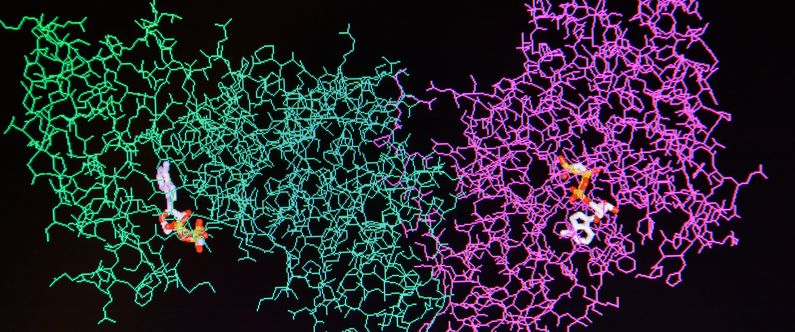WCM-Q research reveals secrets of the cell
 Proteins are essential for all living organisms, vital for the healthy working of the organism's cells, tissues, and organs.
Proteins are essential for all living organisms, vital for the healthy working of the organism's cells, tissues, and organs.
WCM-Q researchers have discovered that a protein known to play a key role in cholesterol uptake and brain development is also crucial to the process of reproduction.
Discovered in 1922, the Very Low-Density Lipoprotein Receptor (VLDLR) protein, has long been known to facilitate the migration of neurons in the developing brain and to play a role in cholesterol uptake. Up until now its role as a chaperone protein for membrane receptor trafficking was unknown.

Lead author of the research, Dr. Nancy Nader, research associate in physiology & biophysics at WCM-Q, explained: “The role of the hormone progesterone in turning immature oocytes (ovarian cells) into mature eggs, in a process known as ‘oocyte maturation’ that prepares the cell for fertilization, is well known. Progesterone mediates its action by binding to a specific protein, known as the membrane progesterone receptor (mPR), located at the plasma membrane, which is the outer membrane of the cell. However, the early steps that trigger oocyte maturation at cellular level are still unknown. By studying frog oocytes in the laboratory we were able to discover that the VLDLR protein acts as a ‘delivery truck’ or chaperone that helps deliver mPR to the plasma membrane and hence mediates its action after progesterone treatment.”
The WCM-Q team used a research approach known as untargeted quantitative proteomics to study the interactions of proteins at cellular level. Using this technique, they were able to identify VLDLR as an mPR-interacting protein. The research team also made use of advanced biochemistry and microscopy techniques to confirm the findings. Interestingly, by knocking down VLDLR protein levels within oocytes, they observed an inhibition of oocyte maturation and significantly much less mPR at the plasma membrane.
Explaining in more detail, Dr. Nader said that the VLDLR protein associates intracellularly with the mPR protein and assures its transport from a part of the cell called the Golgi body, which serves as a delivery depot, to the plasma membrane. Dr. Nader said: “In basic terms, we need mPR to be delivered to the right place which is the plasma membrane, to allow progesterone-mediated oocyte maturation to produce mature eggs that can be fertilized for a new life to begin. Our study has shed light on how one of the previously unknown journeys of a protein within the cell actually takes place, giving us a clearer understanding of cellular function in general and of reproduction.”
The study, entitled ‘The VLDL receptor regulates membrane progesterone receptor trafficking and non-genomic signaling’, has now been published in a leading international journal, the Journal of Cell Science. The research was considered so significant that the Journal of Cell Science recognized Dr. Nader’s contribution in their ‘First Person’ series of articles.
The study was supported by the Qatar National Research Fund (QNRF) grant NPRP 7-709-3-195 and the Biomedical Research Program (BMRP) of Weill Cornell Medicine-Qatar, a program supported by Qatar Foundation.
Dr. Machaca, associate dean of research at WCM-Q, who has led the research, said: “The discovery that the VLDL Receptor plays an essential role in oocyte maturation was quite unexpected and reveals a novel function for this class of proteins that was previously not appreciated. This could have significant implications not only on oocyte maturation but other signaling pathways where non-genomic steroid signaling plays important role.” He added: “Dr. Nader’s efforts in taking this project to conclusion in collaboration with other members of the lab were nothing short of stellar.”